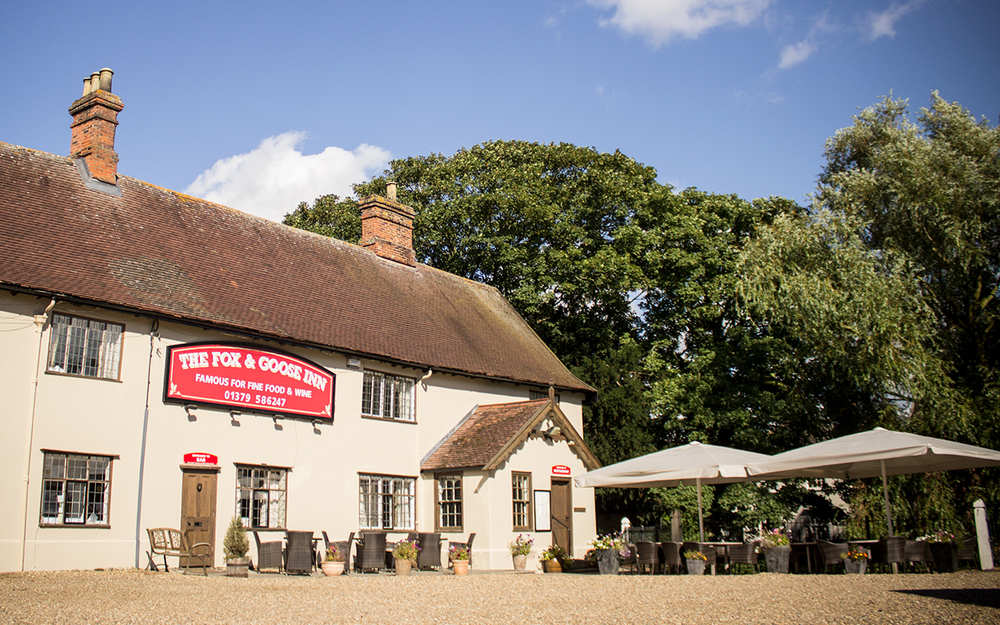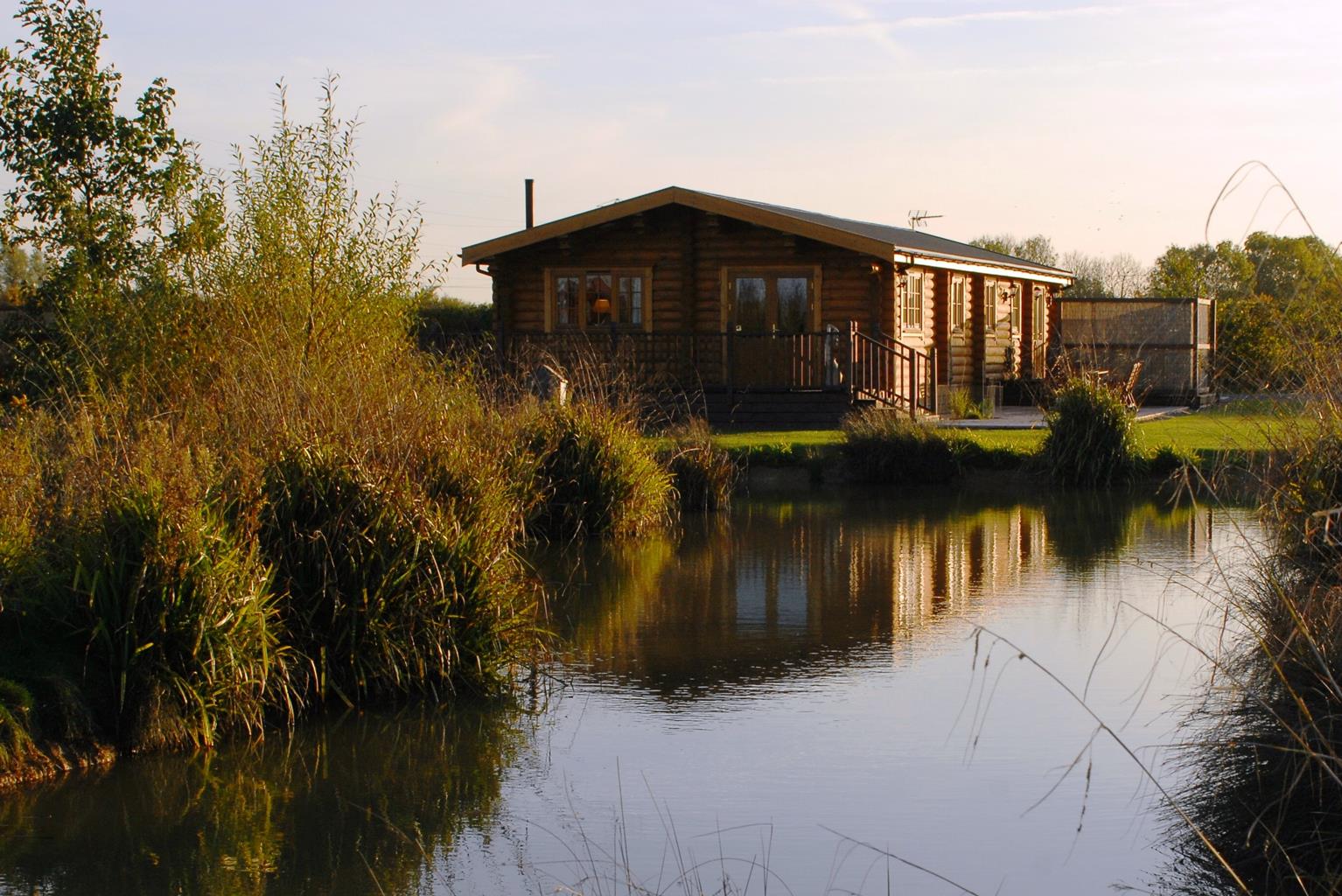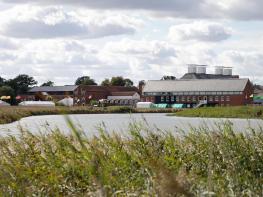Windmill Lodges is a small family-owned and -run site of just seven authentic self-catering log…
A walk around Framlingham Castle

Enjoy views of a 12th-century castle reflected in a lake and a stroll around a handsome market town.
2.5 miles (4kms)
About the walk
This short walk begins in the historic town of Framlingham and heads out into the surrounding countryside, with views of the medieval castle and mere from all sides.
Framlingham Castle
Framlingham Castle was built in the 12th century by Roger Bigod (or his son, Hugh, depending on which historical theory you prefer), whose ancestors had been granted the manor of Framlingham in return for their support during the Norman conquest. The Bigod family became Earls of Norfolk and ruled much of East Anglia as their own personal fiefdom from their castles at Bungay and Framlingham. Unusually, the castle has no central keep but relied for its defence on a curtain wall protected by no fewer than 13 separate towers. Despite this, Framlingham Castle was surrendered to King John without its garrison of 26 knights, 20 sergeants, seven crossbowmen (and a priest) putting up a fight when King John’s army surrounded the fortress in 1215. Since then it has rarely been attacked, which explains its excellent condition.
It was here that Mary I, Mary Tudor, was staying in 1553 as she waited to hear whether she or Lady Jane Grey had been declared queen after the death of Edward VI. When the Black Death passed through here in 1666, the castle saw service as an isolation ward for its victims. During the Napoleonic Wars, when it was feared that the French would invade, the castle became a storehouse for the Framlingham Volunteer Regiment. In its varied career it has also served as a prison, a poorhouse, a drill hall and, finally, a county court. The castle is now administered by English Heritage and you can walk the full length of the parapet walls and climb some of the 13 towers for views across the mere. A new exhibition called ‘From Powerhouse to Poorhouse’ brings to life more than eight centuries of the castle’s history. The entry price includes an audio tour and also a museum of local history with a display on medieval moats.
The Mere
Now a Suffolk Wildlife Trust nature reserve and bird Sanctuary, the Mere is this walk’s first highlight. The lake, which is fed by the River Ore, is a natural feature but it was enlarged in medieval times by the Dukes of Norfolk to improve the setting of Framlingham Castle. The reserve, comprising The Mere and surrounding wet meadows is famous for its sedge beds, which are rare in this part of the country, and the migrating birds that they attract. Flora to look out for here include marsh marigolds – of which there are copious numbers from March to June – ragged-robin and the pale pink lady’s smock. In years when the water levels are not too high, you might also see birds such as snipe and the green and common sandpiper.
Walk directions
From the car park, walk through the kissing gate that leads directly to The Mere. Keep to the left-hand perimeter fence of the reserve and you will soon have marvellous views of the castle reflected in the water. Cross a footbridge and turn right, around the edge of the Framlingham College playing fields. After another footbridge, at a T-junction turn left.
Continue around the field, crossing a footbridge at the end. Turn right along a lane at the entrance to Little Lodge Farm and follow this lane gently uphill. Stay on the lane as it turns to the right at the gates of Great Lodge Farm.
After 200yds (183m), turn right on to a field-edge path which eventually gives good views of the castle up ahead and the Victorian red-brick Framlingham College to the right. Keep left alongside the hedge at a junction of paths to drop down to a footbridge. Cross this bridge and walk along the left-hand edge of the field. Bear right just before the road to continue around the field past an old World War II pill box.
At the far corner of the field, turn right between a fence and a hedge to follow the course of the old Town Ditch, part of the defensive system for Framlingham Castle. Unfortunately, the lowest section can get very overgrown in summer. Either take or fashion a stick and pioneer a way through, or step into the field to your right and follow a parallel course to the path until you reach the (much better) path at the bottom. Turn right and follow the path round to the left to return to the mere. Go through the kissing gate on the left, through another gate and cross a bridge to reach the green at the foot of the castle walls. Follow the path around the edge of the green then drop steeply down to the moat. cross the footbridge, then turn left and climb the steps on the far side to the castle entrance. Leave the castle by taking the bridge across the moat and walk past the car park to the Castle Inn.
Turn left at the duck pond and walk along Castle Street. Turn right along Double Street, a crescent-shaped street on the site of the old moat, noting the Victorian post box on the corner that dates from 1856.Cross Church Street and walk through the churchyard, then bear left to Market Hill, a triangular market place where you will see the town sign featuring the castle and the mere. Cross to the far side by a row of black-and-white timbered houses and continue along towards Leo’s Deli. When you reach a crooked half-timbered cottage, turn right through the archway on to a narrow passage, Queen's Head Alley, named after the pub that once stood here. Follow this path round to the left and turn right along Fore Street. Turn right again along Riverside, noting the unusual town pump with its two spouts, one for the townspeople and the other for horse-drawn water carts. Keep right along the river bank, passing the post office, then cross Bridge Street and keep straight ahead on a path alongside a two-storey block of flats to return to the car park.
Additional information
Town streets, country lanes, field paths, meadows
Framlingham town, castle and mere
Keep dogs on lead
OS Explorer 212 Woodbridge & Saxmundham
The Elms car park (free), New Road, Framlingham
Crown and Anchor Lane, off Church Street
WALKING IN SAFETY
Read our tips to look after yourself and the environment when following this walk.
Find out more
Also in the area
About the area
Discover Suffolk
Suffolk is Constable country, where the county’s crumbling, time-ravaged coastline spreads itself under wide skies to convey a wonderful sense of remoteness and solitude. Highly evocative and atmospheric, this is where rivers wind lazily to the sea and notorious 18th-century smugglers hid from the excise men. John Constable immortalised these expansive flatlands in his paintings in the 18th century, and his artwork raises the region’s profile to this day.
Walking is one of Suffolk’s most popular recreational activities. It may be flat but the county has much to discover on foot – not least the isolated Heritage Coast, which can be accessed via the Suffolk Coast Path. Southwold, with its distinctive, white-walled lighthouse standing sentinel above the town and its colourful beach huts and attractive pier features on many a promotional brochure. Much of Suffolk’s coastal heathland is protected as a designated Area of Outstanding Natural Beauty and shelters several rare creatures including the adder, the heath butterfly and the nightjar. In addition to walking, there is a good choice of cycling routes but for something less demanding, visit some of Suffolk’s charming old towns, with streets of handsome, period buildings and picturesque, timber-framed houses.
Nearby stays
Restaurants and Pubs
Nearby experiences
Recommended things to do
Why choose Rated Trips?
Your trusted guide to rated places across the UK
The best coverage
Discover more than 15,000 professionally rated places to stay, eat and visit from across the UK and Ireland.
Quality assured
Choose a place to stay safe in the knowledge that it has been expertly assessed by trained assessors.
Plan your next trip
Search by location or the type of place you're visiting to find your next ideal holiday experience.
Travel inspiration
Read our articles, city guides and recommended things to do for inspiration. We're here to help you explore the UK.













